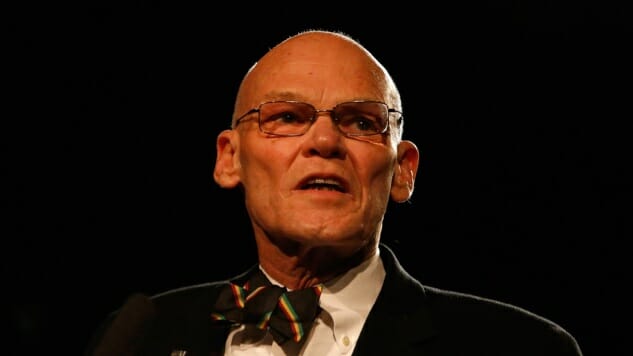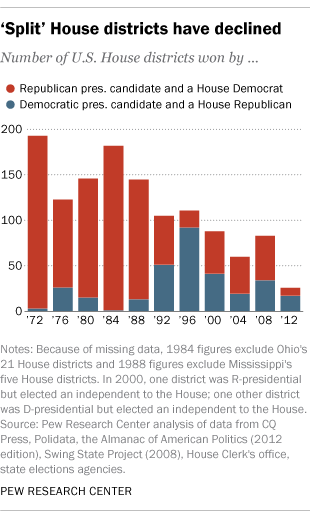After His MSNBC Meltdown Over Bernie, It’s Time to Debunk the Myth of James Carville
Photo by Tyler Kaufman/Getty
“Well, you know, James Carville is well-known for spouting off his mouth without always knowing what he’s talking about. And I intend to stay focused on fighting for the American people because what they don’t need is 20 more years of performance art on television. And that’s what James Carville and a lot of those folks are expert at…a lot of talk and not getting things done for the American people.”
—Senator Barack Obama on Nightline during the 2008 presidential race.
James Carville is traditionally viewed within the Democratic Party as an electoral oracle of sorts. He helped steer Governor Bill Clinton’s surprise ascendance to the White House in 1992 and is universally praised for creating a tagline that does summarize most political decisions made by voters in this country: it’s the economy, stupid.
That victory (aided by Ross Perot, who posted one of the best third-party showings in electoral history and gave Clinton the opportunity to win with just 43% of the total vote—which is the same percentage of Democratic votes Bernie Sanders received in 2016) guaranteed us decades of James Carville on our TVs, proclaiming to know things that later turned out to be untrue. Examples include his plea to Obama to “panic” just two months before he was comfortably reelected, and getting dunked on by Chris Cillizza of all people, over their disagreement on Hillary Clinton being a weak candidate.
The reason this column exists is thanks to the spectacular pundit meltdown at MSNBC this weekend, as folks like Chris Matthews compared a Jewish presidential candidate’s victory in Nevada to Hitler invading France, and James Carville called for the media to interfere in the election on behalf of the anti-Sanders camp.
“The entire theory that by expanding the electorate, increasing, turn out, so you can win the election is the equivalent of climate denial.” Self identified political hack James Carville. https://t.co/UvmegVz99ppic.twitter.com/1SnbOAyEeU
— People for Bernie (@People4Bernie) February 22, 2020
There’s a lot going on in that clip (as there are with all Carville clips, the guy is undeniably good TV), but I want to dissect Carville’s quote in the tweet above. I am not a political scientist, but I do have a political science degree, and the certainty expressed by James Carville that turnout does not lead to Democratic victory is betrayed both by what I was taught about a country with very low voter turnout and recent observable reality. Let’s take a trip back to 2008 when Carville compared Clinton ally Bob Richardson’s endorsement of Obama to Judas and said that if Hillary “gave [Obama] one of her cojones, they’d both have two.”
Relatively unknown Senator Barack Hussein Obama had risen to political superstardom off his 2004 speech at the Democratic National Convention, and defeated Hillary Clinton in the most bitter and ugly Democratic primary most of us have ever seen. The party was clearly fractured, and young and nonwhite folks took control of the primary to force an untested and incredibly risky candidate into a general election defined by widespread dissatisfaction with the current calamitous Republican presidential administration. Plenty of so-called experts warned that America was not ready for a man who looked like our 44th president and who had not one but two names that evoked two of America’s most famed enemies. So what happened?
President Obama won in one of the largest Electoral College blowouts in history, taking Indiana from the GOP, a state Trump won by 19% in 2016. A larger percentage of Americans turned out to vote than at any point in the previous 40 years, and the Democrats became the first party since the 1930s to make substantial gains in back to back Congressional elections. The Democrats flipped eight Senate seats from Minnesota, New Hampshire, Oregon, Colorado, Virginia, New Mexico, North Carolina and Alaska. They flipped 21 House seats from Idaho, Michigan, New York, Rhode Island, Pennsylvania, Ohio, Illinois, Colorado, Nevada, Arizona, New Mexico, New Jersey, Maryland, Virginia, North Carolina, Alabama and Florida.
James Carville then wrote a book predicting a 40-year Democratic majority just before it all collapsed.
James Carville is still invited on TV to give his opinion on the race. In 2008 he declared Obama was unelectable, then wrote a book about how Dems would win every election for he next 40 years. (The following year nationwide Dems suffered the biggest loss in a century) pic.twitter.com/pyd9bwYDI0
— Lee Fang (@lhfang) February 22, 2020
So let me echo then-candidate Obama’s exhaustion posted at the top of this column: as far as what is presented to us on TV, James Carville is filled mostly with hot air. Saying that spurring high turnout can lead to electoral success is not tantamount to climate denial, and it’s absurd to go to that length to make what is a much more nuanced point. Carville is not completely full of bluster on this topic. There is a cogent point being made at the base of this hyperbole, but like most of his analyses, it’s stuck in a different century.
Vote splitting is the implication being made around Bernie Sanders’s rise. The belief is that Sanders will be too unpalatable to the moderates and conservatives across America’s suburbs, and so even if people do hold their nose and vote for Sanders over Trump, they’re likely to vote for Republicans down the ballot to give him a Congressional check on his ambitions. That’s the legitimate fear coursing through the veins of scores of Democrats in tossup districts as Democratic nominee Bernie Sanders looks to be more of a reality each day.
The problem is that vote splitting is yet another 20th century principle being eroded in the 21st. FiveThirtyEight studied the 2018 elections and found that midterm vote splitting is at its lowest mark since their data began tracking it in 1998. Pew’s data goes back to 1972 and shows an even deeper decline of this dynamic in presidential elections.
That’s not to say it won’t happen in districts that do tend to be more moderate. Plus there are real concerns right now about Sanders’ viability with college-educated white women—the group who helped deliver moderate districts in the suburbs to the Democrats in 2018. But to play out this widespread split ticket scenario would require a reversal of a deeper trend in politics that existed before there was a Senator Sanders, let alone a presidential candidate Sanders. Besides, as 2008 demonstrated, a massive tidal wave of motivated voters can overrule a lot of the inside baseball minutiae that only dorks like me and James Carville really care about (all the legitimate concerns being raised about Sanders in the suburbs in 2016 were also raised about Obama in 2008).
Every single presidential election this century has seen the more populist candidate win. The notion that America is just dying for a Very Serious center-left or center-right adult is belied by Bush’s wins over John McCain, Al Gore and John Kerry, Obama’s victories over McCain and Mitt Romney, and President Trump’s upset of Hillary Clinton. If there is any lesson for us political scientists (and scientists-ish) to take from elections in the 21st century, it is that movements which spur enthusiastic turnout on your side of the political aisle are the trump card above all else.
This is a wake-up moment for the American power establishment.
Many in this elite are behaving like aristocrats in a dying regime — including in media.
It’s time for many to step up, rethink, and understand the dawn of what may be a new era in America.pic.twitter.com/tr2jpTD7YY
— Anand Giridharadas (@AnandWrites) February 23, 2020
Trump has a movement. Sanders has a movement. No one else does. By 21st-century election standards, that means that Sanders stands the best chance against Trump’s machine, despite the candidate’s beliefs violating all the political rules of the 20th century. Some folks, like Steve Rosenthal, a veteran Democratic labor strategist, can see the folly at the base of this archaic establishment mindset.
“The establishment, which I guess I’m a part of after all these years, seems to know as much about electability as a donkey knows about calculus. We always get it wrong…The voters are going to tell us who’s electable.”
Pundits like James Carville and Chris Matthews are modern-day versions of those famed Japanese soldiers marooned on an island in the Pacific still fighting World War II in 1981. The Cold War animates so much of punditry’s politics, even though the height of the war was a lifetime ago. If you are 50 years old, you graduated high school when Ronald Reagan left office and have lived your entire professional career in a post-Cold War universe. Political science is not a static enterprise—its entire legitimacy relies on a constant influx of data that quite often challenge our assumptions—and the reason why James Carville is bad at predicting politics is because he clearly has not updated his data since 1992.








































